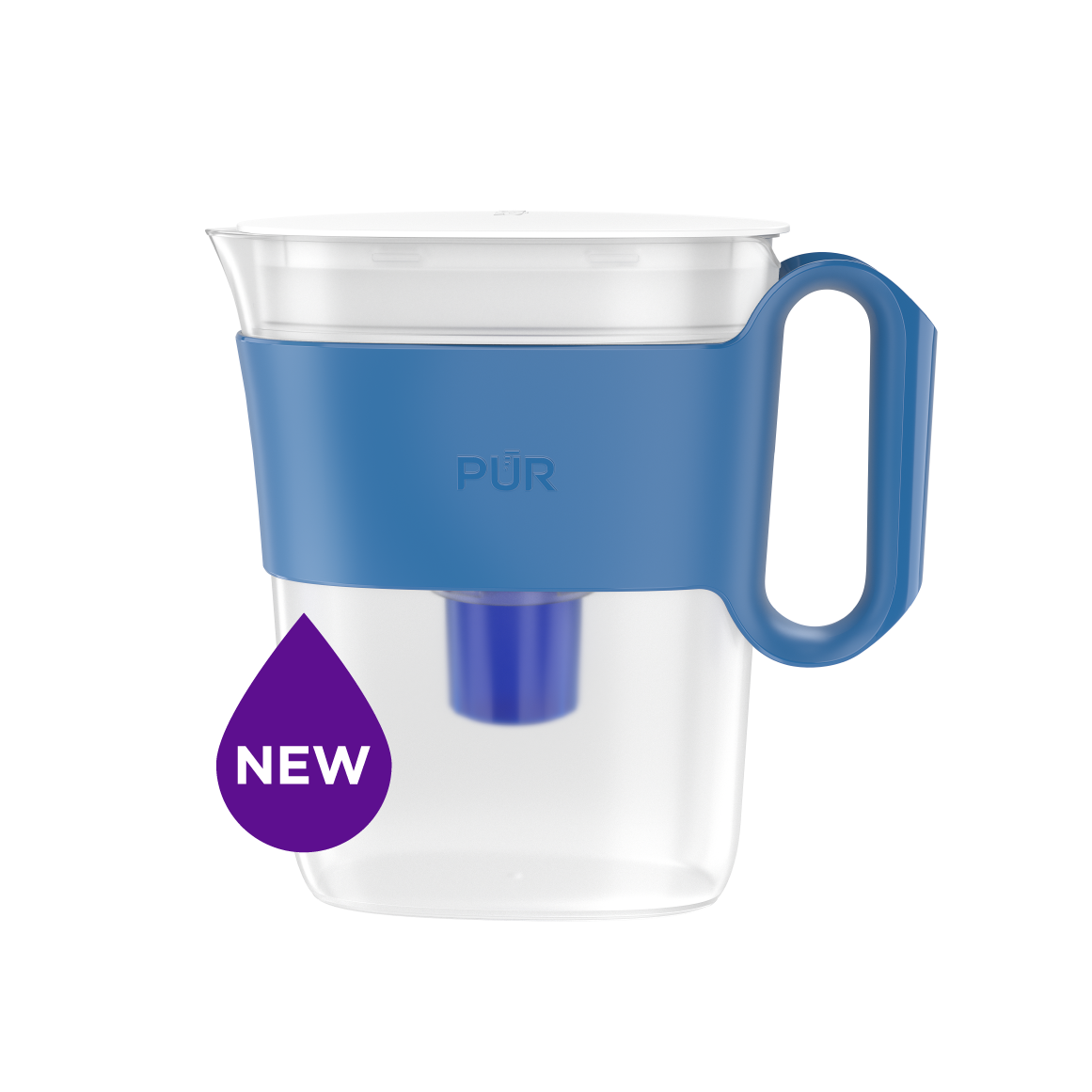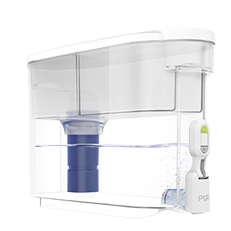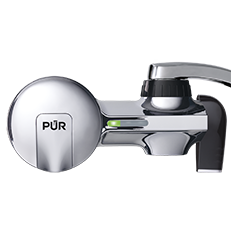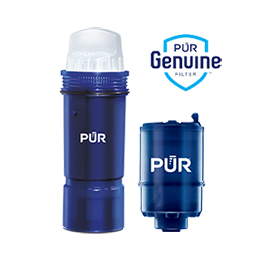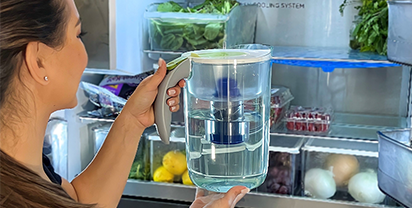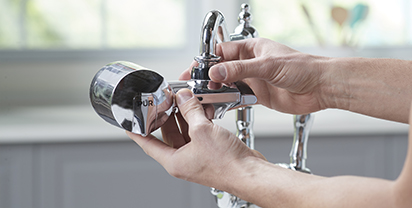LIVING WITH LEAD IN
YOUR WATER
LIVING WITH LEAD IN
YOUR WATER
There is no known safe levels of Lead exposure
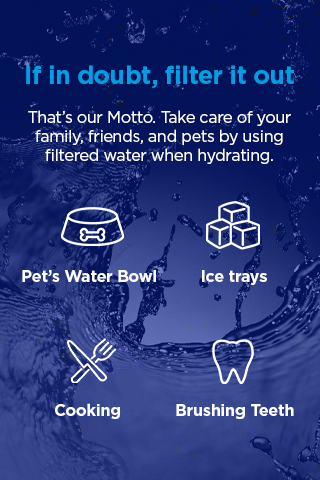
Filter your tap water not just for drinking but also for cooking and making coffee so you can be sure you’re giving your family, your baby, your dog and yourself cleaner and better tasting water.
Use filtered water for the following in addition to drinking water to help ensure reduced Lead exposure:
- Cooking
- Beverages (including tea & coffee)
- Filling ice trays
- Brushing teeth
- Feeding your pet
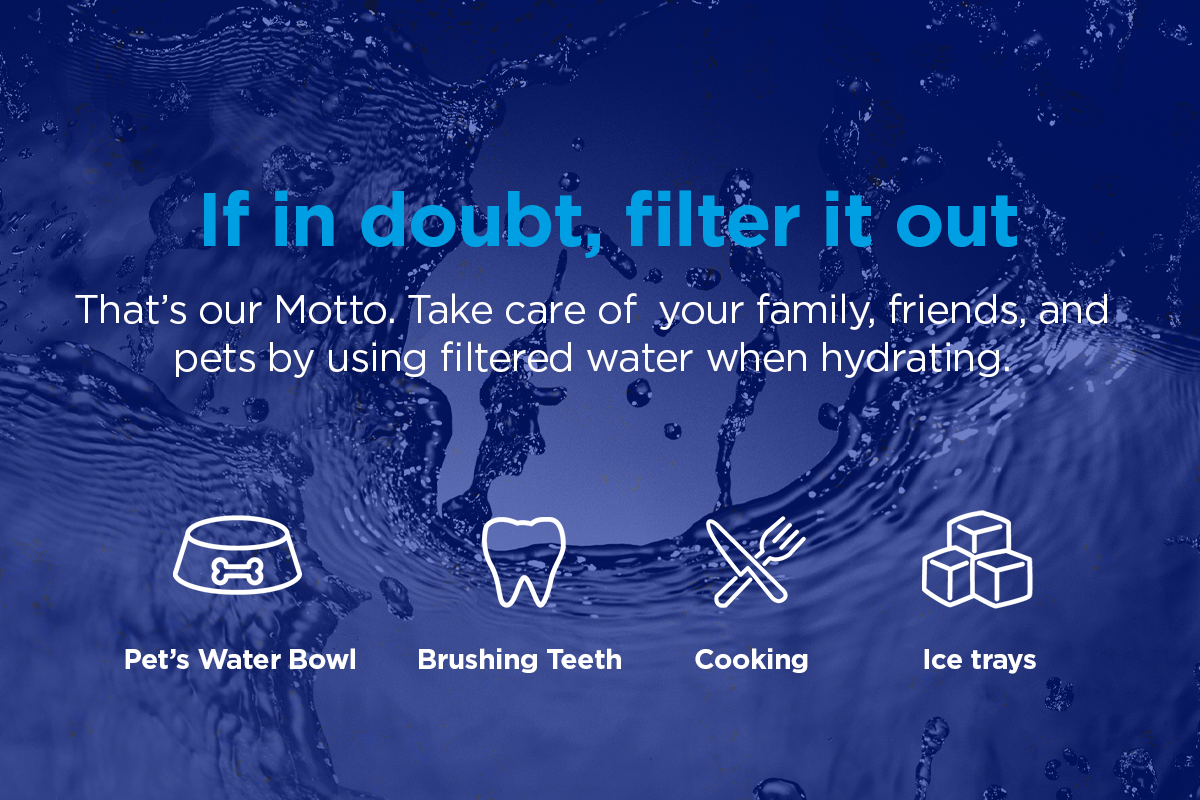
Tips for Living with Lead
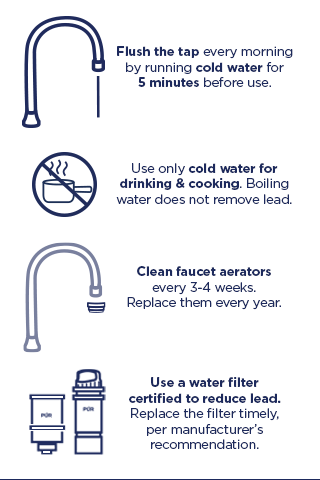
Things to keep in mind for peace-of-mind
Important steps to reduce lead in drinking water:
- Use a PUR filtration system that is certified to reduce lead.
- Have your water tested. You cannot see, smell, or taste Lead in water.
- Flush your pipes by running the cold water. Run your tap for at least 5 minutes every morning or anytime the water pipes have been sitting.
- Do not filter hot water: hot water may damage pitcher & faucet mount filters
- Clean your faucet screen (AKA Aerator). Lead particles can collect in your aerator and get into your water
- Use your filter properly. Install, use, and replace your cartridge per manufacturer’s direction
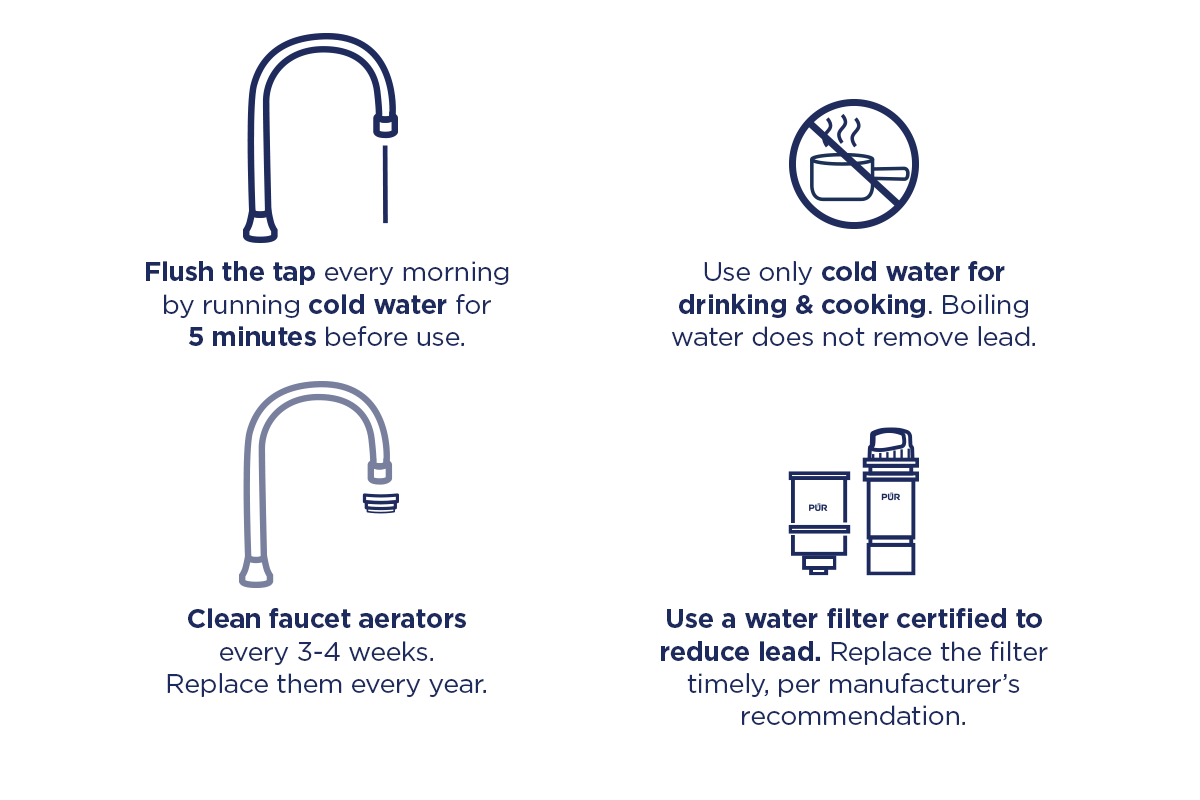
Living with Lead FAQ
Finding out there may be Lead in your water can be scary. Here are simple measures you can take to help protect you & the ones you love.
Why is Lead a concern?
Lead is a toxic metal that you can’t see, smell, or tast in water. It can be harmful to human health, even at low exposure levels.
How does Lead enter my water system?
The Plumbing in your home could be contributing lead in the water you drink. Its most prominent after the water sits in the pipes for more than 6 hours.
Will boiling water remove Lead?
Boiling water WILL NOT remove Lead. It may make it worse.
To learn more, visit www.epa.gov/safewater/lead
What does my water test mean?
After you’ve gotten your water tested at a state certified lab, you’ll need to know what’s next.
The Centers for Disease Control and Prevention (CDC) states that there is no known safe level of Lead exposure. Even moderate to low levels of Lead exposure—which might cause subtle symptoms—can still produce serious harm.
If there are any traces of Lead in your drinking water, it is best to use a filter certified to reduce Lead and follow the tips outlined on this page.
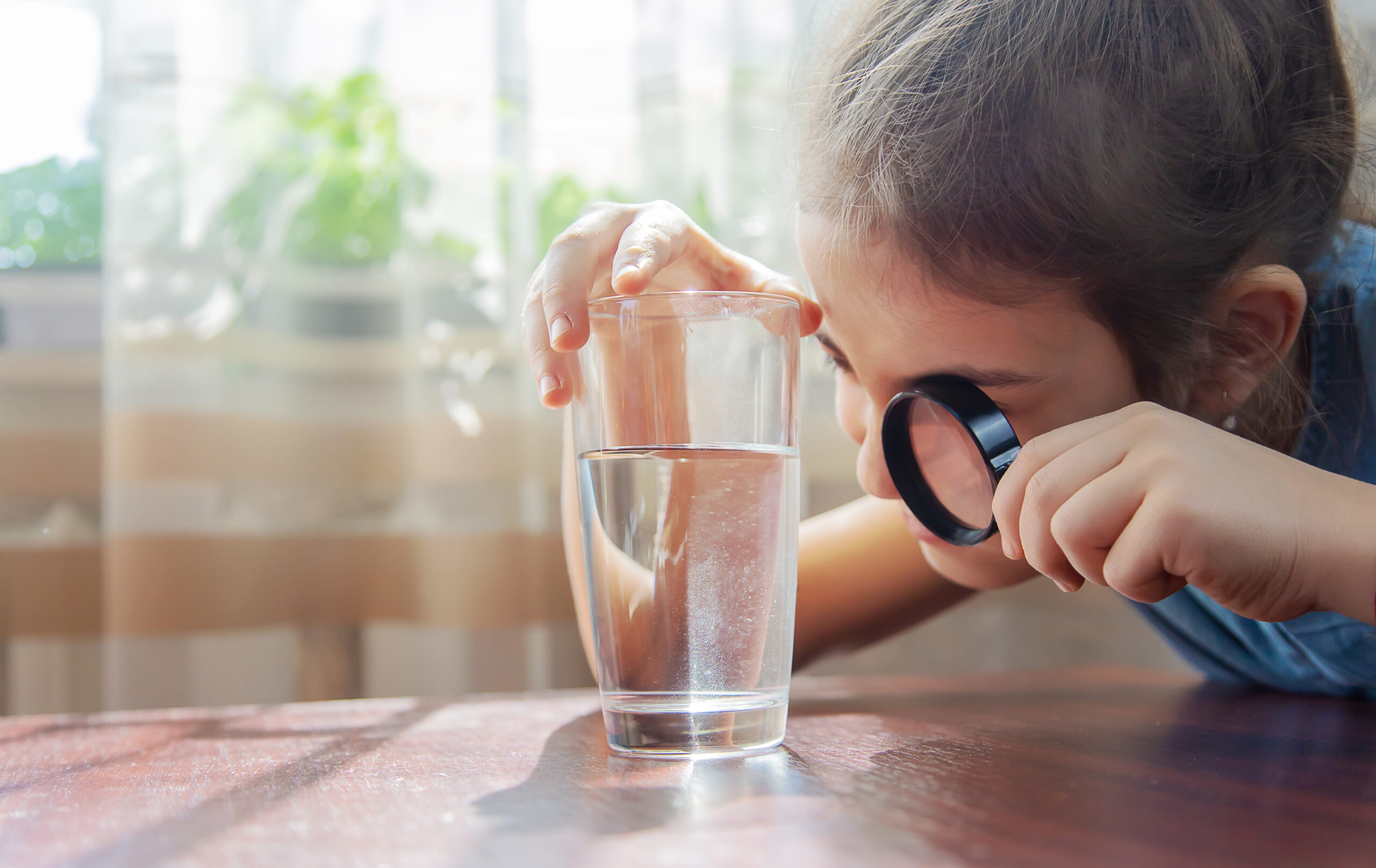
#1 Selling Brand that filters Lead Water
Be Sure It’s 
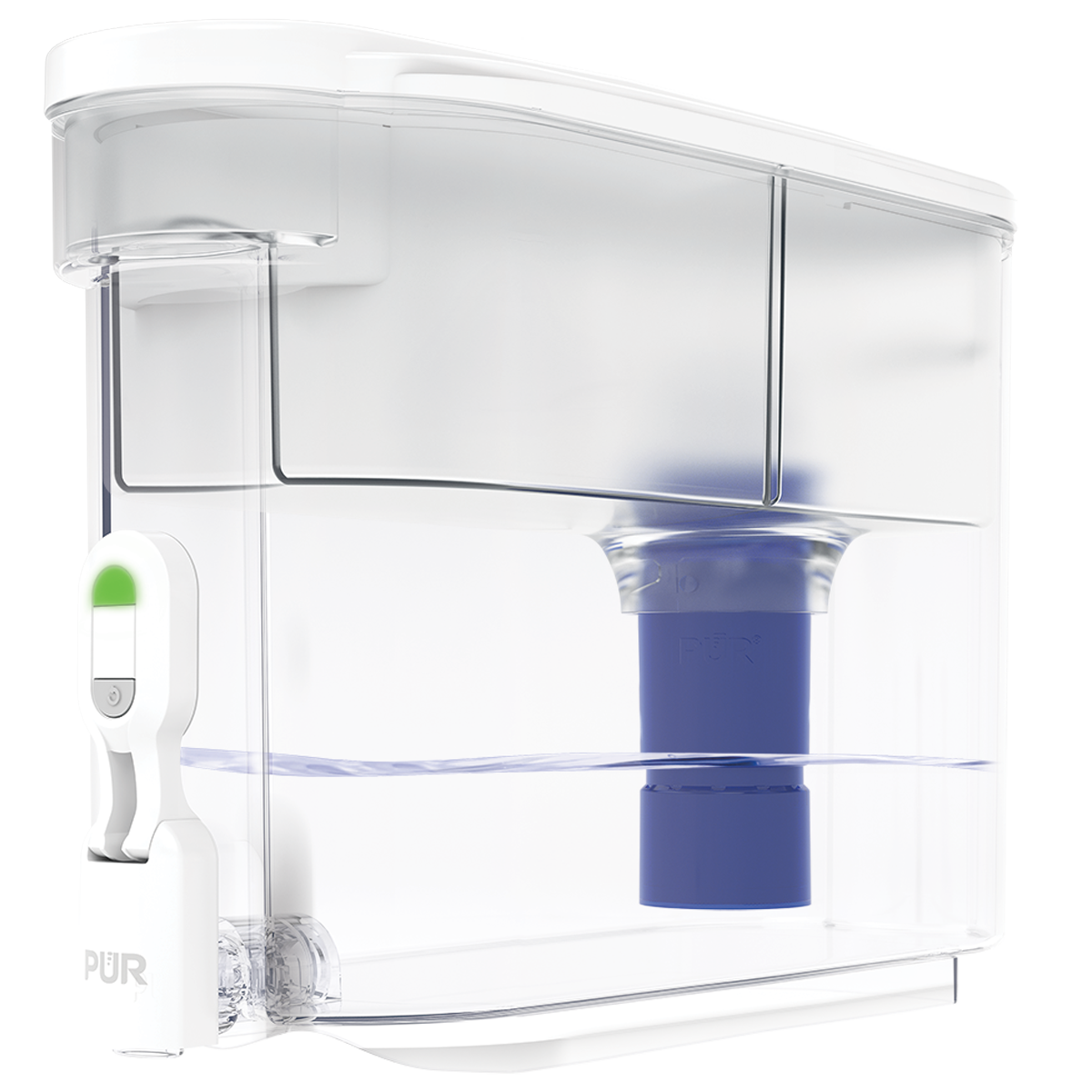
PUR PLUS 30 Cup Dispenser
- WQA certified to reduce Lead
- Reduces chlorine, copper and zinc that cause bad taste and odor¹
- NSF certified to reduce microplastics found in tap and bottled water¹
- Hassle-free design: pull down spout, carrying handle, and filter change light
- LockFit™ design to ensure unfiltered water doesn’t mix with filtered water
- Compatible with all Genuine PUR Pitcher & Dispenser replacement filters
- Dishwasher safe


